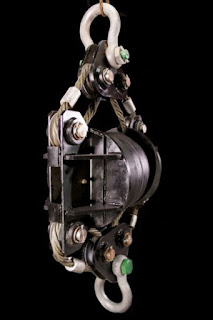A caisson is a box-like structure that is used as a foundation or as a water-tight structure that allows construction employees to work underwater without needing SCUBA (self-contained underwater breathing apparatus) equipment.
There are four major types of caissons used in construction projects: Box, Open, Monolithic, and Pneumatic.
A box caisson is a structure that is open at the top and closed on all four sides, as well as the bottom. These are usually floated over a prepared underwater foundation, then filled with cement to sink the caisson and create a foundation structure that can be used in the construction of dams or for bridge piers.
An open caisson has four walls but is open at both the top and the bottom. The bottom is fitted with a cutting edge that allows the caisson to sink into soft material, such as sand or the muddy bottom of a river. As it is driven into the ground, additional box caissons are placed on top, making a connected tube that allows workers on the surface to pump our water, silt, and mud until the caisson hits the bedrock. The “well” created is then filled with concrete to complete the pier.
Monolithic caissons are similar to box caissons but are much larger in size. They are generally used for quay walls where impact resistance from large cargo ships is necessary, basically acting as a large bumper.
Pneumatic caissons have four walls and a closed top but open bottom. They create a space between the cutting edge and the bulkhead, providing an area that can be pressurized to keep water and mud out, providing a space for workers to enter from the surface by way of an airlock. This allows construction crew members to work inside the caisson, excavating the mud and soil below through a muck tube.
Since these structures are generally not completely solid like a normal pile that might be driven into the soil for a foundation base, they can’t be embedded with a traditional pile-driving impact hammer. They require a specialized type of hammer to sink them into position and drive them further down to facilitate whatever purpose they are being used for.
This is accomplished through a caisson hammer that actually uses vibration instead of brute force to sink the caisson into sand or mud. The vibration from the hammer actually helps to move the surface material the caisson is being driven into out of the way, allowing the caisson to easily sink in until the proper depth is reached. When the vibrations are turned off, the mud and/or sand settles back into place, fully securing the caisson where it needs to be.
Because they use vibration instead of force, caisson hammers can be used in almost any kind of ground condition, including underwater projects where foundations are needed for bridges, piers, breakwaters, or similar projects.
Once in place, they become permanently lodged to the sea or river bottom, providing the support needed to complete the rest of the project. And because the vibration can be controlled to target only the areas immediately surrounding the caisson while it is being sunk, the process is much more environmentally friendly to the surrounding sea life.
If your company does not currently have a caisson hammer, but you have been awarded a project that requires one, you may want to consider caisson hammer rentals in Missouri.










